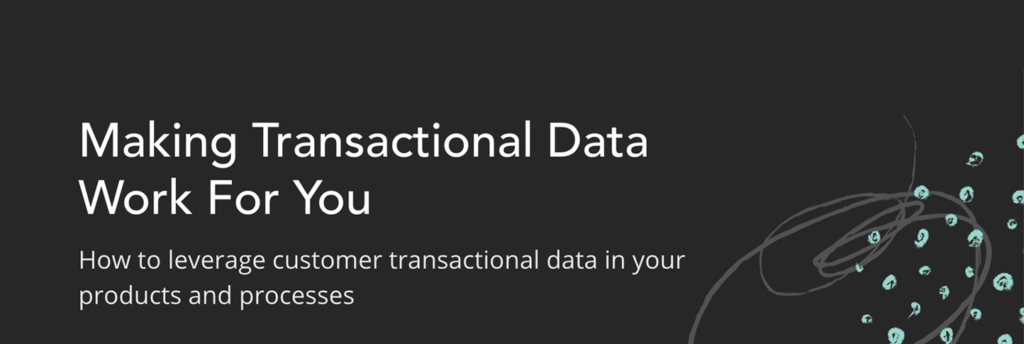
Alex Jimenez is Chief Strategy Officer at Extractable, and widely recognized as one of the top social media influencers on innovation in financial services.
How Banks Successfully Leverage Data: They Don’t Do It Alone
The mathematician Clive Humby famously said, “data is the new oil.” Many in financial services agree with that assertion as they look at the mountains of data financial institutions have amassed. However, they struggle with finding ways to tap this new oil and turn it into profits. There isn’t a simple process to extract data from disparate systems, refine it and develop a product for sale.
Since Amazon, Netflix, Google, Apple, Facebook, and other big tech companies have successfully used data to personalize their products and drive innovation, financial institutions have focused on personalization as the main use case for data.
It is easy to conclude that many financial institutions already have such a capability, judging by the large volume of articles in the financial and fintech press covering the use of data by banks to drive innovation and personalize banking experiences. Everyone is talking about it, so everyone must be doing it.
The reality is that banking executives and senior managers still use data like they did twenty years ago.
Data builds “rearview mirror” reports that they interpret to make decisions about the future. Similar practices exist for banking marketing teams even for the vaunted “next likely product.”
“We have all this data and we don’t know what to do with it.”
Speaking to community banking executives about the gap between what is possible and actual implementations, the response is often “we have all this data and we don’t know what to do with it.” The disconnect isn’t because bankers cannot identify what is possible, it’s that they don’t know where to start.
The financial institution’s IT organization has built a data warehouse or a data lake. Access to the data has improved and data reports are much easier to be developed. Yet, the challenge comes from not having available resources to transform data into actionable insights, powering better products, and customer experiences.
These common scenarios might ring true to you:
- The financial institution has failed to properly define a business case and gain approval to hire appropriate resources.
- The financial institution has been approached by a vendor who promises a great solution. But they feel that they cannot allow access to their customers’ data to a vendor that is going to store it off-premises, where they have no control over it.
- The financial institution is tied up to a third party that solves some of their problems but is unable to answer any request that goes beyond the features already provided.
In many cases, we see financial institutions frozen with the problem of lots of data and no new uses for it.
Intrepid community banks and credit unions are addressing the problem by working with technology partners, often fintech firms, to leverage data and find creative solutions that top the market.
Those who succeed operate three important mindset shifts in how they perceive collaboration, innovation, and control. Let’s examine them one by one.
Optimizing value creation through collaboration
Financial institutions looking to craft competitive advantages through data face technology gaps. There is a tool that they need, and they simply don’t have it yet. The classic impulse is to build it on their own: institutional resistance to engaging external help is real. But a growing number of smart financial institutions now move outside of their comfort zone to collaborate with fintechs.
The current trends in leveraging machine learning and artificial intelligence are a prime example of this. Chances are that financial institutions would be pretty good at building their data categorization and enrichment engines in-house, since they have known their data for decades if not more.
One strategic question to consider is: “Is this the optimal use of our limited resources to generate value for our clients?”
More and more financial institutions now engage with fintechs, gaining from their ability to develop data categorization and enrichment solutions quickly and at a lower cost.
Impactful collaboration requires that value, between the financial institution and the fintech, can be identified and delivered against. For instance, the tasks associated with developing a product or a solution can be assigned to the subject matter expert. Having a service provider clean up and categorize the data — which is labor-intensive and best done by specialized fintechs — frees the financial institution’s own experts to work where they can really create value, like building better models.
Embracing innovation as collective intelligence
Opportunities offered by collaboration between financial institutions and fintechs run deeper — but they are easy to overlook. It is one thing for financial institutions to view fintechs as service providers, not competitors, and leverage existing innovation to close technology gaps. It is something else entirely to engage with them as innovation partners. And there lies the second mindset shift.
Our current context is market by rapidly evolving consumer behavior, technological disruption and a growing number of new players. Even big banks can’t expect to keep up with customers’ expectations on their own. As fintechs grow and mature, they develop their own understanding of the market and how their technology can bridge the emerging or widening gaps.
Closing technology gaps in one-way relationships with services providers misses on a lot of what innovation has to offer today.
Bringing fintech partners into the conversation allows banks to explore new perspectives and opportunities to innovate faster — whether a separate workforce to work on problems the financial institutions themselves don’t have the capacity for, or wholly new avenues of market penetration that a fintech (and their technology) makes possible.

This is a lesson that HSBC takes to heart, as they announced their intent to open their second AI lab in Toronto. Artificial intelligence firms are invited to perform analyses on a giant dataset, which the bank hope will generate insights to fuel product development and improve customer experience.
Obviously, smaller financial institutions and credit unions don’t have the luxury to create whole AI ecosystems. Or even dedicate teams to work on their data. But that does not mean they should refrain from attacking complex problems with fresh perspectives via fintech partners. All parties stand to gain exponentially from bridging knowledge gaps, thereby powering innovation through collective intelligence.
Regaining a sense of control
A common and limiting misconception is that engaging with fintechs means financial institutions will lose control over their data and market share. This is a valid concern for institutions that don’t have strategic direction and a vision for how new technologies can help getting there.
The truth of the matter is that partnering up with fintechs is an opportunity for financial institutions to increase jurisdiction over goal achievement, meaningful delivery and thereby impact to customers.
Of course, engaging in partnerships means financial institutions will have to entrust elements of their problem statement with external subject matter experts. This is where sound strategic planning pays off.
Financial institutions have a deep expertise when it comes to the regulations and requirements that govern their space. They have a broader perspective over the client relationship and have their customers’ trust.
With clearly defined problem statements and business goals based on their strengths, financial institutions can leverage fintech partnerships to achieve faster and more comprehensive solutions.
When building machine learning and artificial intelligence data tools, one pitfall to avoid is buying a black box instead of building a relationship. Financial institutions should focus on keeping ownership of their models, and continuously improve them. Being able to actually add or change attributes allows them to avoid being stuck with models that are no longer useful in an ever-evolving market and customer base.
By integrating fintechs with tailor-made solutions that address broader problem statements, financial institutions can leverage innovation to increase operational efficiency and scale, which translates into faster delivery to market and satisfied customers.
So let’s recap
Leveraging data to drive innovation, including personalization of customer experiences, can only be achieved when the leaders of an organization changes their mindset.
Unlike oil, data is not a finite resource; a financial institution’s opportunity to use data continues to grow. Taking advantage of the opportunity will drive innovation, but only if the financial institution is open to collaboration within the organization and with partners that can help them.
This article was co-written with Andrea Neufeld, Flinks’ Head of Customer Management.
A version first appeared on The Financial Brand.
You might also like

Making Transactional Data Work for You
We collect financial data faster than we can make sense of it. Here’s how data enrichment tools enable you to leverage transactional data in your processes.

Data Enrichment: From Chaos to Superpowers
A look at how we’ve built a data enrichment tool to transform millions of lines of raw transactional data into actionable outputs.